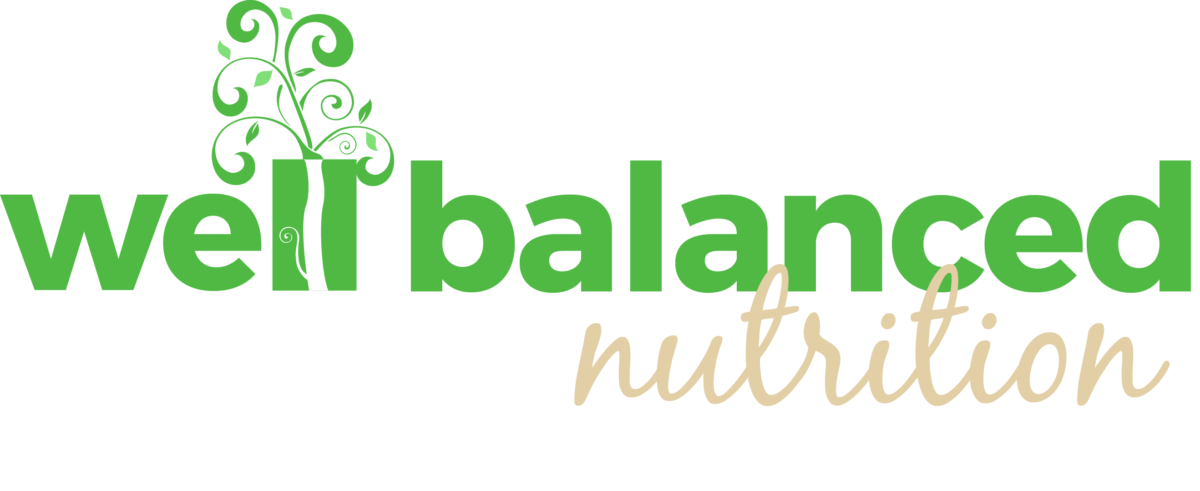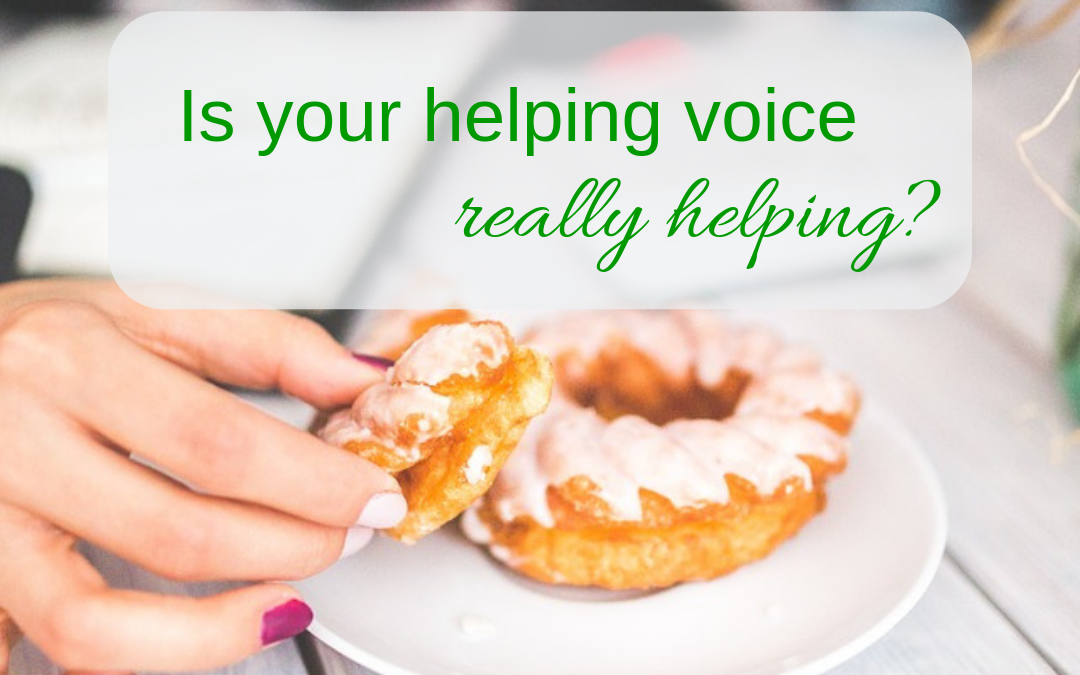
by Lucy | Feb 12, 2019 | Nutrition Questions Answered, Well Balanced Wisdom
You know that little internal conversation you have when staring at the buffet table, open bar or other indulgent food (or beverage) choice? There’s often opposing voices or thoughts going through our minds such as “it’s not that bad, “or “you know, you really don’t need that…”
You are normal
The good news, you are not crazy if you are hearing voices too! In fact, most of us have an inner helping and sabotaging voice. I think of it as friends versus an accomplice. Our friends help us when we feel down by saying comforting words that are uplifting and encouraging like this exchange with my best friend, Gretchen:
Me: I have a craving to quit my job, eat icing out of a plastic tub, and drink a margarita. Apparently, I’m feeling stressed…
G: Is it weird that we have all the same stress things? LoL
Me: Hahaha no, makes me feel less strange. And probably just confirms the soulmate best friend thing 😛
G: What’s got you so stressed?
Me: It’s the story I’m making up around people canceling or rescheduling last minute (clearly appointments with me don’t matter… Yada yada yada)
G: I’m sorry babe. I know that gets to you. You are amazing and important. Everyone overbooks and overdoes this time of year. That’s all it is.
See how Gretchen affirmed my feelings and gave me a chance to process through my negative thoughts? On the flip side, my thoughtful office mate, Richard, is more of an accomplice. When I told him that I was stressed out and craving sugar and/or booze he offered me animal crackers with icing and a beer or wine from the mini fridge. Not that he was purposely trying to sabotage me! On the surface, it sounds like those external stimulants or numbing agents are the cure to our problems, but we typically feel worse about ourselves after using comfort foods to “feel better.”
The answer is in you
I can tell you in moments of stress nothing outside of us can make what’s going on inside feel better. Sure, the chocolate may light up some happy hormones in your brain which could temporarily take away the sadness. However, often when we turn to food or a drink to deal with negative feelings those choices cause guilt or shame, which leads to the downward spiral of making more unhealthy choices.
Recently, while speaking with the client, she mentioned when she eats ice cream with her son in the evening or on weekends her sabotaging voice will say “it’s OK, you’ll do better tomorrow.” I asked, “what does your helping voice say in opposition?” She responded, “I tell myself ‘you know you’re already gaining weight and you don’t really want to gain more weight’.”
Did you notice her helping voice sounds super judgmental?
Is that helpful?
Instead, I asked, if her friend called and explained she was feeling upset and was about to eat a pint of Ben & Jerry’s ice cream “what would you say to a friend you know is trying to lose weight?” She had much more supportive words for her friend that did not include justifying or shaming her choice to eat ice cream.
Food for thought
What kind of stories is you’re sabotaging voice telling you? When do you notice yourself reaching for food or a drink to soothe your negative emotions?
How can you respond to these cravings as a friend instead of an accomplice?
Looking for a friendly dietitian to help you sort out your food cravings? We can help 🙂

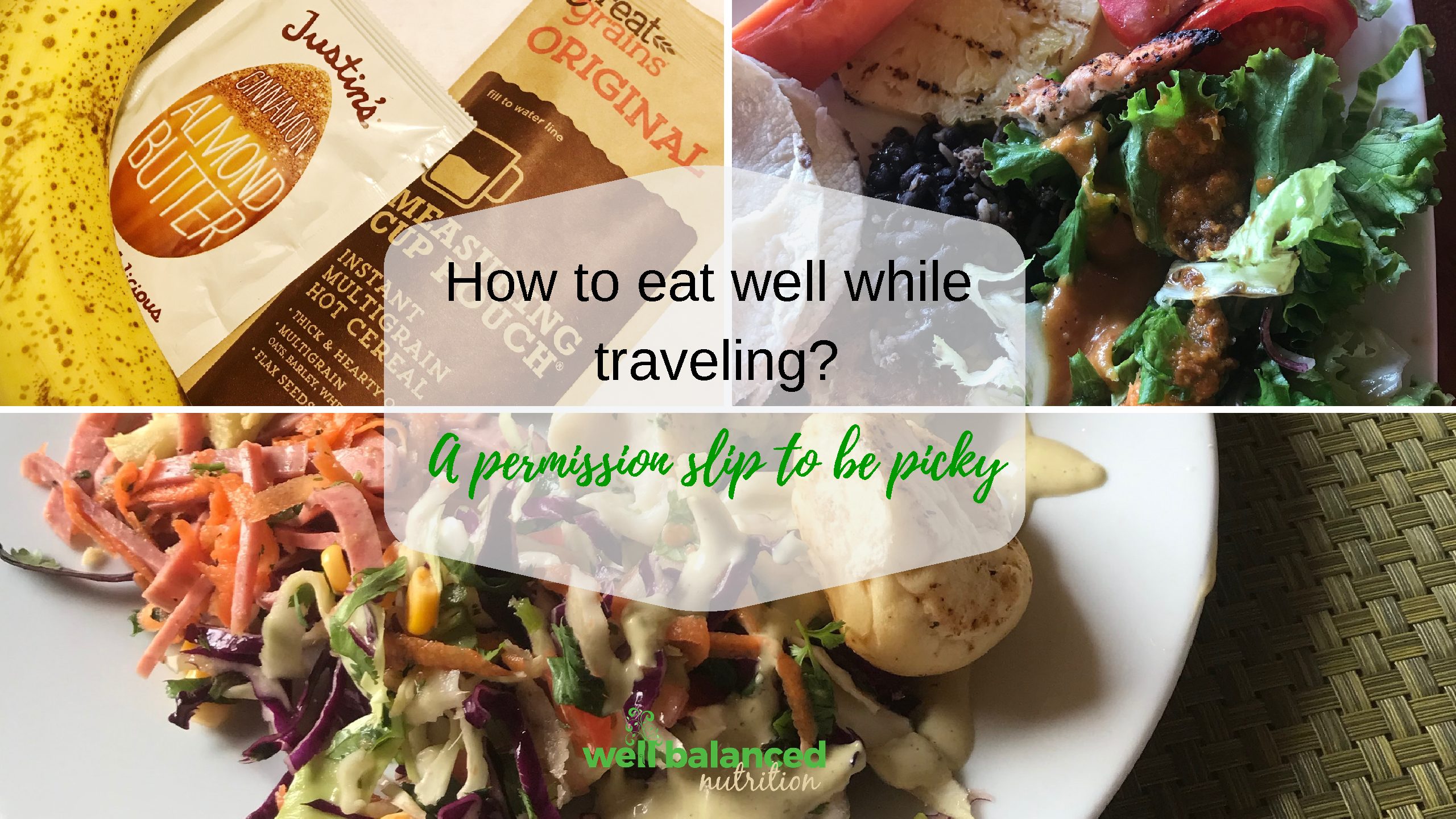
by Lucy | Feb 7, 2019 | Nutrition Questions Answered
Did you know approximately 1 in 5 of American’s have IBS and 40% of the population is living with a chronic condition?
This is a good reason to be nice to ourselves and nice to others because we don’t know what they are going through. It can be especially challenging to know how to eat well while traveling.
In January, Kristen and I went on our first international Well Balanced adventure to Costa Rica! It was an incredible trip coordinated by our new friend, Amanda Chay, with Wonderment. Needless to say, we had a lot of new experiences such as repelling down the side of the canyon into surprisingly cold water and discovering my new obsession with papaya!
As many of you know, I (Lucy), have been managing and coping with IBS for several years now. Click here to learn more. Anyway, whenever I travel, I get a little extra anxious around the lack of control regarding my food choices. In our small group of seven, we had 80% of the meals preplanned and catered to us. Normally, this sounds like a dream come true! However, when you have food sensitivities it can be more like a nightmare.
How I stay routine and regular
On our first morning in San Jose, Costa Rica, while I scooped up a small bowl of oatmeal my fiancé told our tour guide leader, Amanda, that oatmeal is a daily ritual of mine. She laughed and said, “well you can enjoy a break from that because I don’t have oatmeal on the menu for our breakfasts this week.” I laughed, I looked at Andrew and said, “isn’t she so funny?“ What Amanda did not know is I had packed six portable oatmeal packets and mini almond and peanut butter packets in order to continue my routine, which helps keep other things routine (*wink *wink).
So often, while talking about setting up healthy habits and sticking with them I hear clients say “but I don’t want to be picky or difficult.” For instance, if someone has a digestive and sinus issues they may greatly benefit by going dairy-free; however, when going to a friends house or out to eat they decide to just be polite and eat all the things despite knowing the negative effects of eating dairy products.
Change takes effort at first
Two years ago, when I did the big IBS elimination diet, I found my brain consumed thinking about “what am I going to eat at my next meal??” We’ve learned between 80 to 95% of everything we do is subconscious – think about last time you took a shower… did you think about every move you made? It takes time and energy to make conscious changes to our dietary choices, but it is possible. First, we must become aware of what and why we want to change. Then, we can make a plan and take action.
It doesn’t take that long to start feeling a little better and for your brain to pick up on new habits if you stay consistent. Some people will tell you it’s only 21 days; however, we learned from the book Better Than Before by Gretchen Rubin that on average new habits take about 66 days.
Your permission slip…
If you’re in the midst of making dietary and lifestyle changes or you already know what works for you, remember it’s OK to be picky and know that on occasion we might slip up and put cheese on the salad with ranch dressing because after all, we are human.
If you’re ready to feel better and determine which foods may be triggering inflammation and pain in your body, let’s chat.
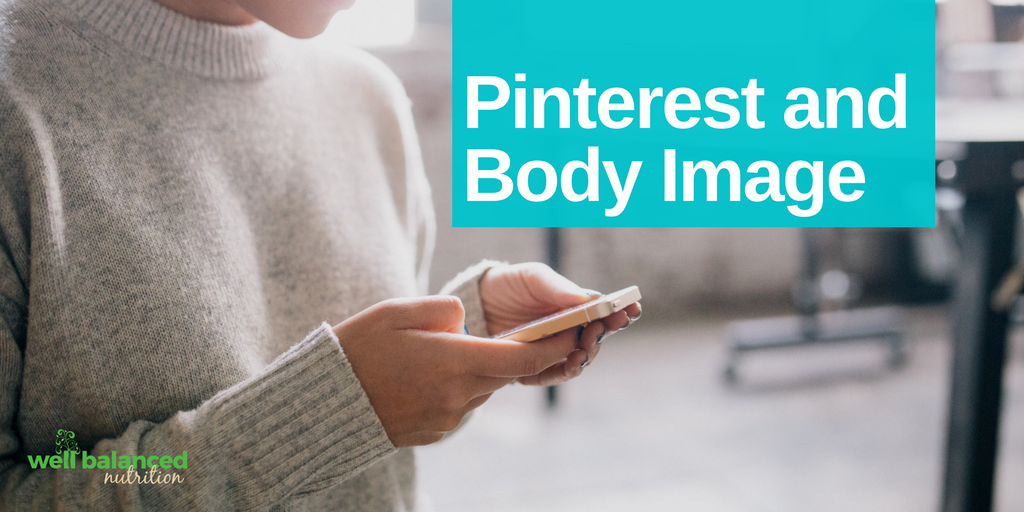
by Lucy | Feb 12, 2018 | Well Balanced Wisdom
Don’t get me wrong; I love Pinterest. I think that it is a brilliant place to share creative ideas. I truly cannot imagine life without this excellent resource; however, I’ve noticed Pinterest is sometimes a trigger for body dissatisfaction. Lately, I’ve been reading The Body Image Workbook by Thomas Cash, Ph.D. I am addressing and reevaluating my body relationship and body awareness. Yes, even us skinny gals can have body image issues.
[Sidebar: I’ve decided to fast from Facebook during the Lenten season to spend that time with my creator instead of browsing mindlessly. Since I’m not banning all social media, I’ve spent a little more time on Pinterest & Instagram (@WBN_RDs)]
In this workbook, I’ve learned we all have what the author, Dr. Cash, calls Private Body Talk. In our private body talk, we have stories running through our mind – often unconsciously – about how we look. He uses the word ugly, which I truly hope none of you are calling yourselves because you are uniquely beautiful. The book goes on to explain that we each have different triggers, assumptions, and beliefs about our body image. And why wouldn’t we… What with all the perfect flat tummies and perfect booties depicted on Pinterest, Instagram, and other social media outlets. I mean seriously, who are these people with perfectly sculpted abs?! We may think “what are they eating or doing to look that way?” Or “I need to get more strict about my diet so I can have a body like that too.”
Good news, there is a tool to help.
My favorite part of the workbook is the emphasis on mindfulness. It goes into a lot of detail on increasing our mindfulness specifically around body image stories. I modified an idea in the book and created a new tool to start to notice and address these negative body image stories. It’s the TTE method:
- Thought
- Trigger
- Emotional effect
First, is noticing the body image conversation or thought. Example: you look at a photo of yourself and think “Wow, look at that fat face.” Which may spiral into a barrage of negative thoughts about other aspects of your looks you do not like. The next step is to identify the trigger. In this case, it was looking at the picture. For many, simply stepping on the scale is the beginning of a downward spiral into self-sabotaging thought patterns. Such as, “why do I even bother? I’m always gonna be fat.” The last step is recognizing the emotional effect these thoughts have on you. It does not feel good or motivational when someone calls us mean names. That usually hurts and feels shameful. How is it different for you to speak like that to yourself? We’ve shared before how words matter. Whether spoken aloud or in our minds, these have a profound impact on our behaviors and choices.
Food for thought:
I don’t actually blame Pinterest for body image concerns; however, I recognize those pictures of all the perfect airbrushed bodies can lead to negative internal chatter. That’s when I choose to log off and get centered in my own truth:
“I value feeling good. I have a healthy mind and healthy body to match.”
What are your big triggers?
What’s your truth?
You are more than a number on the scale and you matter.
If you need someone to talk about body image or to make more healthy lifestyle changes, we are here to help. Just click here to start the conversation.

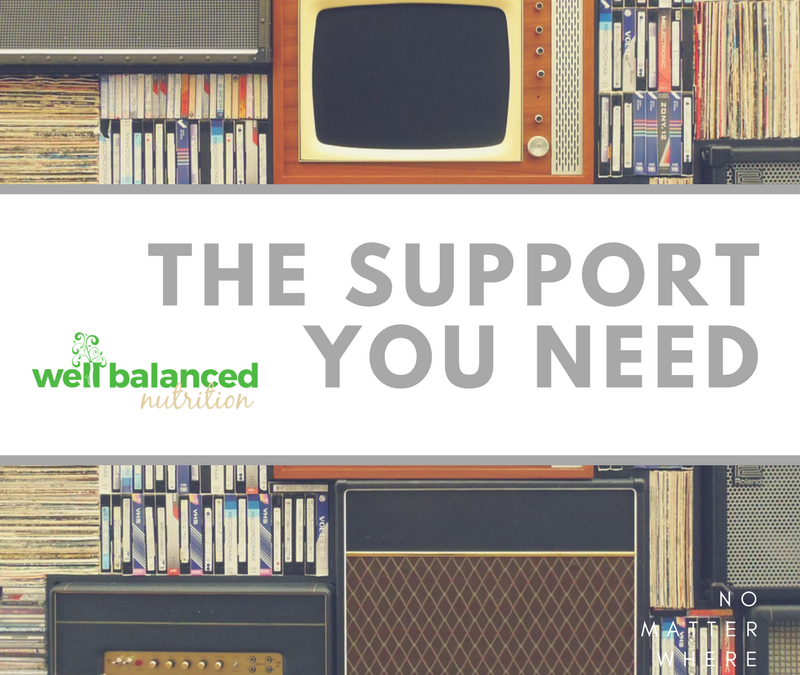
by Lucy | Jan 1, 2018 | Motivational Mondays
Last week, in a delicious yoga class at the
Hot Asana studio near Southpoint, our instructor offered props and said, “this is not to make you move, but to help you feel supported.“ This made me think of our goal at
Well-Balanced Nutrition. When most of the environment around us promotes convenience food and unbalanced options, it is our mission to give you knowledge, tools, and support to make choices that will have you feeling your best, not just surviving the day. At the same time, we aren’t forcing you to make any changes and here’s why.
Want to vs supposed to
The USDA tells us we are supposed to do 30-minutes of physical activity every day. We are supposed to eat at least five servings of fruit and vegetables… Or is it nine? We’re supposed to get eight hours of sleep. And we’re supposed to be taking at least 10,000 steps. What is your gut reaction to supposed to?
Now on the flip side, I’m curious to know what you want to do? For instance, I want to eat well balanced because I feel better when I include a fruit or vegetable with each meal or snack. I feel well rested when I get at least seven hours of sleep each night. Luckily, walking is my zen time so physical activity comes naturally. I do these things because I want to.
I know from years of practicing dietetics that if somebody is told to change, but they don’t really want to, the change is less likely to stick. You have to make the decision for yourself. Sometimes, that means changing your perspective. I do this because I want to feel better, not because I’m supposed to do this. Other times, it could mean you are simply not ready to change and that’s okay.
Choosing the right “brain food”
If you want to make a change, choosing the right brain food is important. All forms of media we take in are what I call “brain food.” For instance, if you watch evening television and suddenly find yourself craving pizza, it may be due to a Dominos commercial. While driving down the road you see a billboard for a giant juicy hamburger, it may trigger the brain to crave those foods. The people you spend time with, the places you go, where you buy food, the social media you enjoy, the books you read, the radio stations you listen to, the shows you watch, the recreation activities you do, etc. are all sources of brain food.
Ways we offer support
You can
follow us on Instagram where we post some of our favorite meal ideas or little things we find fun or inspirational throughout our day or
join our closed Facebook group where everyone shares recipes and supports one another. We offer accountability with our
Healthy Habit Tracker and one-on-one sessions for personalized support. If you are ready, we are here for you. Even if you are just
considering change, you know you can find some good “brain food” here.
Food for thought:
- What are you feeding your brain and how is it supporting you and your well-being?
- Who can you ask for support?
- What books or resources will give you more knowledge?
- Where can you find social support?
If you need more support or just want to talk about the next steps on your wellness journey,
click here to schedule a free call with one of your friendly dietitians at Well-Balanced Nutrition.
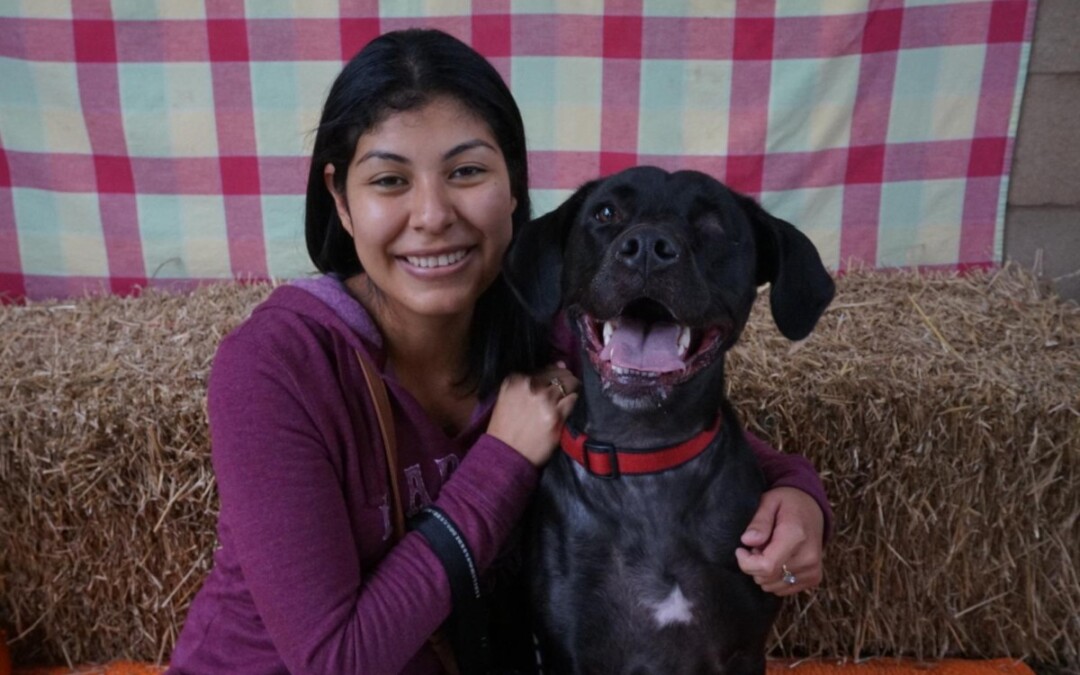
by Lucy | Nov 2, 2017 | Transformation Tuesday
I joined Well Balanced Nutrition because I had gained weight and my clothes were not fitting. I wanted to lose weight and get back to my weight from a year ago. I am a very self-conscious person and always compared my body to other people and was not happy with who I was.
I started doing one-on-one appointments with Lucy and she is amazing. Lucy listens to you and the goals you want to accomplish and helps you get on track. She explained to me how the well-balanced plate works and helped me eat more healthy foods, while still enjoying the foods I love.
I have a dog and he loves to go on walks and I always found an excuse to not be able to go on walks and Lucy told me about the 5-4-3-2-1 (The 5-second rule). Since implementing the 5-Second Rule, I take my dog on walks – he loves it – and it keeps me active and moving as well.
It has been an amazing journey for me, I have made progress since meeting Lucy. I eat more vegetables too. Before, I didn’t eat many vegetables and wasn’t up for trying new things either. Now, I portion my food and I am trying new things, such as recipes from Skinny Taste Cookbook. I am still a picky eater but much less than before. I go on walks with my dog and I have joined the gym and go 3 days per week, which that is a big milestone for me.
I have also learned to love myself and my body more. I’ve stopped comparing my body to others. We are all different, we do not know what other people are doing to maintain how they look or how long it has taken them.
We each have a different journey we embark on to get where we want to be.
For me, I found that I want to be and feel comfortable with the clothes I wear. Compared to where I was a year ago, I feel comfortable where I am right now, I feel confident. Also, I found something that I like to do which is donate blood and platelets and you must maintain a certain weight to donate.
Thanks to Lucy, I have been able to stay on track and know what to do if I get sidetracked from my goals. She has been amazing in helping me find what works for me and what doesn’t. She also helps me figure out what to change when I feel stuck and want to give up. I have learned how to eat the things I love while still maintaining a well-balanced style. For me keeping a routine works best and helps me stay on track with my weight. Well-Balanced Nutrition is just the best.
Let us know how we can help get you unstuck! Click here to get started today.


